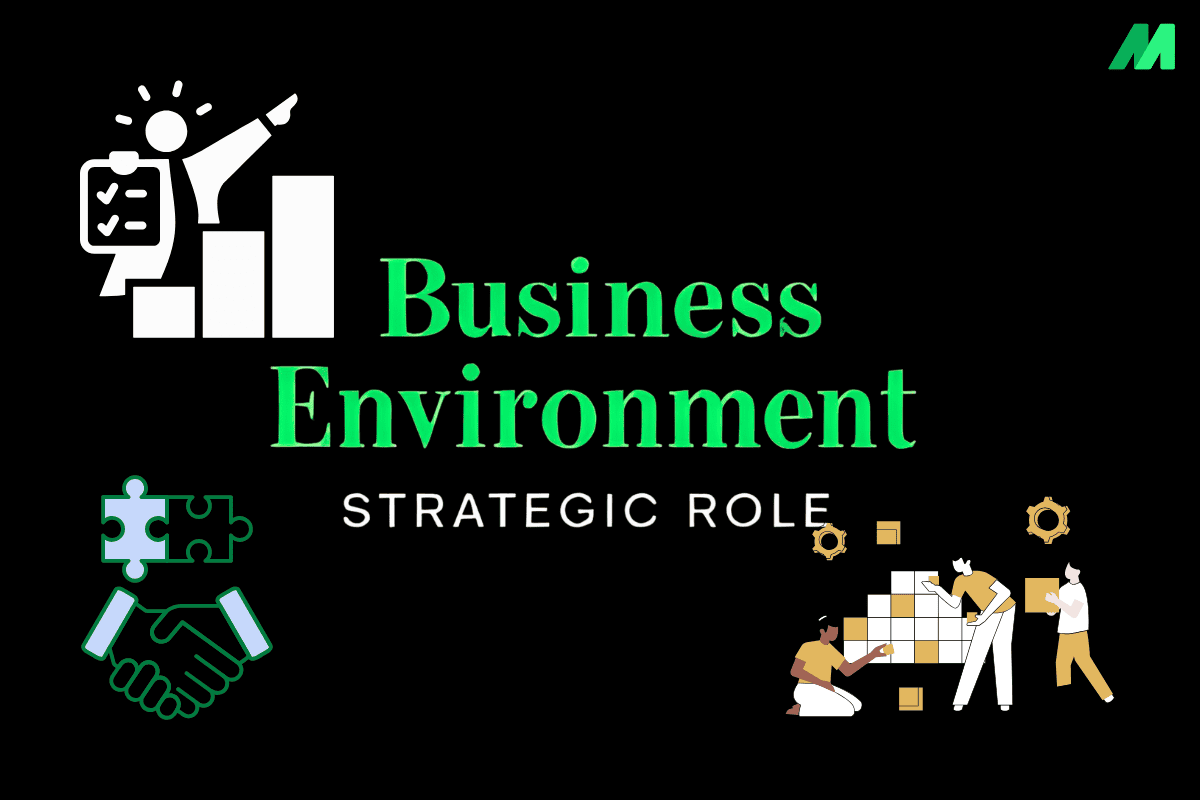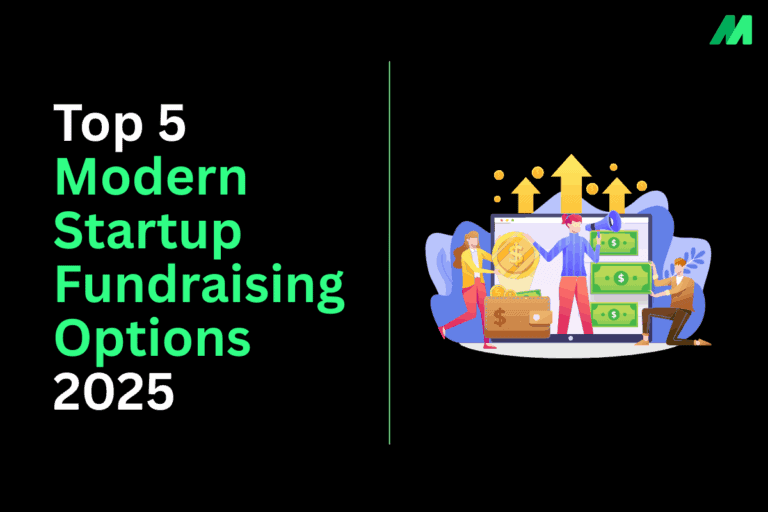In today’s fast-evolving market, the business environment, comprising economic, technological, social, political, and legal factors, plays a strategic role in shaping a company’s long-term success. Understanding and adapting to these dynamic external and internal forces enables organizations to sustain competitiveness and profitability amid constant change.
What is the Business Environment Strategic Role
The business environment includes external and internal factors affecting a company’s organization, and includes a company’s operations, its economy, the social environment, technology, politics and law. The importance of the business environment is that it provides the strategic framework for long-term organizational planning and its competitive position within the competitive set. Companies ought to stay attuned to strategically adjust their strategy with the changing environmental context of the competitive environment so that they maintain growth and profitability.
In relating this to a successful firm consider Apple, Inc., their dynamism to be in front of industry trends and to innovate successfully in anticipation of those trends, is certainly attributable to its leader Steve Jobs’ visionary leadership. Notably, Steve Jobs had risen to become one of the most important influences on technological change and advancement, introducing innovative new products like the iPhone, creating a culture where consumer expectations, both marketplace and organizational, were dramatically changed. The Toyota production system, not to be outdone by Apple, created Toyota’s Industry leadership by focusing on continuous improvements in efficiency to minimize waste or inefficiencies.
The example of Apple, Inc. and Toyota, clearly illustrates how awareness of their ever-changing and more dynamic business environment and one where new opportunities and threats will continually emerge in human and business activity, and why awareness of the environment is a key input in the strategic management process.
Role of Business Environment in Decision-Making
Often, Business decision making. Ranging from money spent on resources or developing products, are determined by external factors. By contrasting market patterns, competitors, legislation, and society change, manager can make well-informed decisions that maximize the resilience and agility of the business.
Netflix, for example, utilized the move from renting DVD’s to enhancing social behaviors, and transitioning from a rental company to a flexible powerhouse of streaming services. These decisions were initiated by observing the changes in social behavior using technology. Understanding both the external environment and the internal environment takes place externally as well, but is a deep scan.
Thus, the more parameters’ companies integrate into their decision making by analyzing the environment, the more they can see risks and opportunities. Subsequently, businesses may modify their range of approaches at sustainable levels. To mitigate risks and sustain movement in being the provider of services to customers. DJ Ripland suggests what a business could do to have an advantage.
Environmental Scanning and Its Importance
Environmental watching is the process of monitoring, evaluating and communicating information from the external and internal environments that seek to maintain emerging trends, opportunities, and threats. Tools such as SWOT (Strengths, weaknesses, Opportunities, Threats) and PESTEL (Political, Economic, Social, Technological, Environmental, Legal) analysis are examples.
- SWOT Analysis helps firms assess internal capabilities against external challenges to develop strategic initiatives.
- PESTEL Analysis provides a comprehensive view of macro-environmental forces shaping the industry landscape.
As an example, EID Parry India Ltd implemented strategic environmental management to respond to natural, technological, political, economic and social forces while maintaining operational effectiveness and sustainability. Environmental scanning makes it easier to adapt, looking ahead to accommodate changes which ensures the long term vitalization and growth of the organization.
(Insert graphics here: SWOT and PESTEL framework visuals)
Challenges of Business Environment
Businesses are challenged by multiple things in their environment, such as:
- Rapid technological change that requires ongoing investment.
- Political instability and changes in regulations that impact business operations.
- Changes in economic conditions that impact demand and cost structure.
- Changes in social conditions that impact consumer wants and desire, as well as a shift to a new workforce.
- Environmental concerns and sustainability.
An example is Blockbuster Video, which lost out to Netflix because they failed to adopt the new trending development of digital streaming. Businesses must address external environmental challenges with innovation, adaptive planning and management, and persistent monitoring of the environment.
Role of Sustainability and Corporate Social Responsibility (CSR)
Sustainability and corporate social responsibility (CSR) have taken on paramount importance in the business strategy. This shift has intensified as society’s demand for ethical behavior and environmental stewardship increases. Business strategies addressing sustainability find themselves in the right place. They describe meeting regulatory and legal demands, brand equity, and long-term economies.
Silicon Valley Clean Energy (SVCE) presents an example of an organization that recognizes the importance of community and environmental benefits in its strategic planning. SVCE has looked at social and ecological purposes and intertwined them with its operations. Sustainability in business determines the direction of innovation. It reduces risk and increases trust with stakeholders. In complex business arrangements, it becomes enormously meaningful by adding value.
What is Sustainability and Corporate Social Responsibility in the Business Environment Strategic Role?
Basically, when a business goes green, it means they’re trying to make money in a way that’s good for the planet and for people, not just for today, but for years to come. That means trying not to trash the earth, screw over people, or mess up the economy. The idea comes from way back, which says we should live in a way that doesn’t screw things up for those who come after us.
Now, Corporate Social Responsibility is when companies decide to be good citizens. They try to do things like act ethically, give back to the community, protect the environment, and just generally be responsible, even when the law doesn’t require it. Doing this kind of stuff helps the community and makes the company look much better, too.
| Relationship to Business Environment | Explanation |
| Interaction with External Forces | Sustainability and CSR shape how a company responds to economic, social, environmental, and regulatory forces. |
| Risk Anticipation and Mitigation | Businesses using sustainability and CSR anticipate risks from environmental regulations, social issues, and governance demands. |
| Opportunity Capitalization | Such businesses leverage opportunities like consumer preference for ethical brands and regulatory incentives. |
| Corporate Citizenship | Sustainability and CSR drive companies to act as responsible corporate citizens within their environment. |
| Contribution to Stability and Healthiness | Corporations engaged in these practices help maintain a stable and healthy environment necessary for long-term success. |
| Impact on Economic Success and Social Acceptance | Responsible environmental practices enhance economic growth, social acceptance, and reduce environmental impact. |
Future Trends Affecting Business Environments
- Digital Transformation: The emergence of technologies such as artificial intelligence, big data, cloud computing, and the Internet of Things is changing business models, the way companies interact with customers and how organizations gain efficiency as part of their operations.
- Climate Change: The increasing requirement to reduce an organization’s carbon footprint and shift to renewable energy is now affecting regulations, cost, based on the environment and stakeholder expectations.
- Globalization: Organizations face changing trade policies, as well as adjustments to cross-border collaboration that create changing competitive dynamics.
- Social Expectations: Organizations need to change their decision-making, focusing on social justice, diversity, and equity with regard to what is expected to be a more responsible corporate environment.
Organizations that recognize these trends and embed them into the strategic and operational framework will, ultimately, be in a better position to manage uncertainty.
A comprehensive understanding of the business environment empowers companies to make informed decisions, embrace change, and sustain competitiveness. Combining strategic foresight with environmental scanning ensures resilience and success amid evolving economic, social, and technological conditions.




